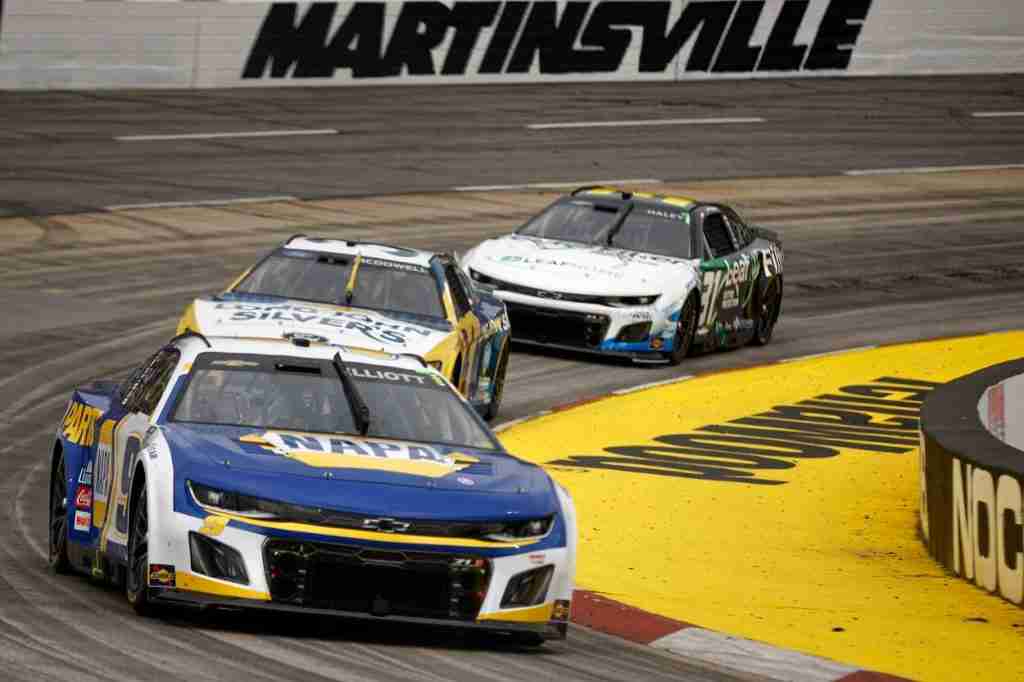THE NASCAR The playoffs have been a hotly debated topic in the industry since their first iteration nearly two decades ago. But recently Martinsville Speedway Cup Series races have helped prove their worth in more ways than just ensuring a close championship battle.
Martinsville has been a fixture on the NASCAR calendar since the sanctioning body was officially established in 1949. It has witnessed every change in the sport over those 75 years, including the recent introduction of NASCAR’s latest model car.
The NASCAR Next Gen car struggled to produce much passing on short tracks

The sanctioning body introduced the Next Gen car for competition in 2022. The idea was to provide teams with all the parts to build their vehicles from a single supplier, in the hopes of reducing costs and promoting parity throughout the series.
It is still very expensive to own a race team in the Cup Series, but the series has seen a few new owners join the sport, at least in part due to the Next Gen cars’ business model. The parity aspect has been a huge success in the 2022 season. A record was tied by 19 different drivers winning a race, including 16 in the 26 regular-season races.
Yet the New generation car The car’s first season was not perfect. The rear of the car was too stiff and caused several drivers to suffer concussions when their car hit a wall. It also failed to match the quality of racing that the previous model offered on short tracks and road courses.
The April 2022 race at Martinsville is perhaps the clearest example of this. William Byron The Red Bulls dominated the race with a 212-lap lead in the 400-lap event after Hendrick Motorsports teammate Chase Elliott led the first 185 laps. The race featured only two yellow flags for incidents, and even the last of those was a borderline call in an apparent attempt to spice up the end of the event with seven laps to go.
The Next Gen car isn’t the only culprit, though. The spring and fall races at Martinsville have seen a wide gap in the intensity of their respective races for years since Martinsville became one of 10 tracks to host a playoff race when the original Chase championship format debuted in 2004.
The playoff races have regularly been marked by increased intensity at Martinsville
NASCAR added eliminations to the playoff format in 2014, and Martinsville has been the final cutoff race before the championship event since 2020. The first two years as a de facto semifinal event featured races with 12 and 15 cautions, respectively.
Of course, the number of cautions doesn’t always necessarily correlate with the intensity of the race, but that’s often the case at Martinsville, as most incidents on the flat short track occur when one driver ejects another in the corners.
That trait was all but gone in the first Martinsville race with the Next Gen car last year, and it hasn’t changed much in the playoff race. A combination of factors, including wider tires, limited-power engines and the ability to shift gears, has made passing much more difficult.
Playoff format may have saved quality of fall racing at Martinsville
The 2022 Martinsville playoff race wasn’t much different in terms of the drivers’ ability to pass. The event only featured six yellow flags, including two for stage breaks, but this race is considered an instant classic due to the incredibly intense final 50 laps that included the historic Ross Chastain “Hail Melon” wall movement in the last lap to gain the necessary positions to reach Championship 4.
Without the playoffs, the October race at Martinsville a year ago likely would have been just another disappointing short-track event with the Next Gen car. In many ways, it was the playoffs that saved the quality of that race.
Sunday’s 2023 spring race at Martinsville featured a return to the following slump that has plagued several early-season events at Martinsville in recent years. Pole sitter Ryan Preece led the first 135 laps until the first caution of the day sent the field into pit lane. Preece was assessed a pit lane penalty for speeding and could only recover to 15th place in the final 265 laps.
The remainder of the race featured a special break, a loose tire caution on the track and a JJ Yeley crash with 46 laps to go. Track position was the deciding factor in whether a driver had a good race or not. Joey Logano started the race from the back of the field and was unable to make up much ground until a pit strategy call gave him the lead during the Yeley crash caution. Logano was then able to hold onto second place behind winner Kyle Larson.
The race was pretty standard for what has become Martinsville’s spring event. It lacked the intensity of the fall playoffs.

